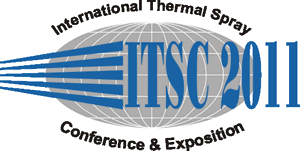
|
2858 |
|
Liquid injection into atmospheric plasma and its effects on plasma properties and ways optimizing coating efficiency |
|
Dennis Soysal* / German Aerospace Center (DLR - Deutsches Zentrum für Luft- und Raumfahrt), Germany Tetyana Kavka / IPP Prague, Czech Republic Asif Ansar/ German Aerospace Center, Germany |
|
Injection of liquids into atmospheric plasmas is one of the key issues for solution precursor plasma spraying (SPPS) and suspension plasma spraying (SPS). Both use liquids for feeding precursors and feedstock materials for coating. Therefore it is crucial to know how liquid injection influences the plasma and how it is treated in the plasma. Experiments were conducted on TriplexPro 200 with various radial liquid injections. Different diagnostics were modified or developed to meticulously examine injection properties and its effects on plasma. With a high resolution shadowgraphy system the point of injection within the plasma core is observed very closely. Details of liquid atomization and evaporation can be visualized and evaluated. As active plasma diagnostics enthalpy probe measurements with a TEKNA enthalpy probe system is used to study the influence of liquids on downstream characteristics of plasma plume. Where spectroscopic systems only give indirect values of plasma conditions this system allow us to measure plasma properties and its composition directly in the plasma. Axial and radial profiles of plasma enthalpy, temperature, velocity and composition reveal an extensive set of plasma conditions that were affected by liquid injection. Different parameters are studied in this paper to optimize liquid injection into atmospheric plasmas, e.g. plasma current (200A to 550A), plasma gas composition and ratio of Argon and Helium (30slm to 100slm), liquid feed rate (10 ml/min to 150 ml/min) and different liquids (water, ethanol). On a fixed set of parameters deposition efficiency of YSZ-suspension is correlated with injection parameters to determine which has the strongest influence. Finally coating microstructures are shown to see which treatment the precursor has undergone. |